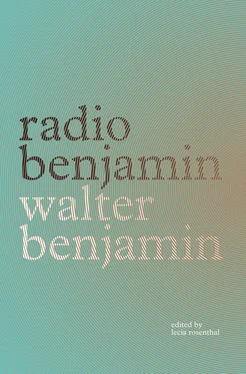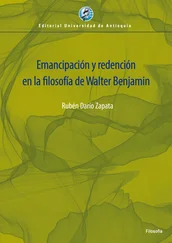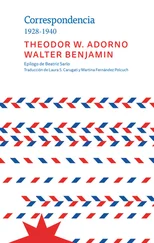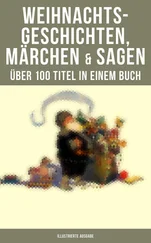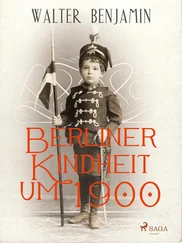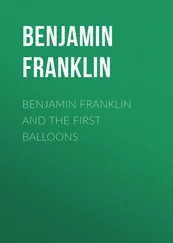Now I’ll read to you some of the traps he laid for her: Tinchen bravely crosses the border into the magic land, thinking only of her brothers. At first she sees nothing special. But soon she arrives in a vast room filled with toys. Everywhere are little booths laid out with every possible distraction: carousels with ponies and wagons, slides and rocking horses, and above all, the most magnificent dollhouses. Seated in armchairs at a small, decorated table are some large dolls. Upon catching Tinchen’s gaze, the largest and prettiest among them stands up, bows gracefully, and says to her in an exquisite little voice: “We’ve been expecting you for some time, dear Tinchen, come and lunch with us.” As she speaks, all the other dolls rise to their feet; even the baby dolls in their cribs lift their little heads to see her, and Tinchen, enraptured, sits down in the small armchair awaiting her at the table. Tinchen relishes the delectable treats and after lunch, as the dolls begin to dance and more toys begin to stir around her, Tinchen is so beside herself with joy that she claps her hands and cries: “Oh, how beautiful it is here. Here I’d like to …” What did she want to say? Of course she wanted to say: “Here I’d like to stay.” But she’s not allowed to say that if she wants to free her brothers. So, a small blue bird suddenly appears, sits on her shoulder and sings her a little reminder:
Tinchen, dearest Tinchen mine,
Think about your brothers thine!
Thus she makes it through all sorts of enchanted lands, with the little bird always appearing just in time. We could follow her everywhere if this weren’t the radio station’s Berlin Hour and I didn’t have to zip back to Berlin through secret underground tunnels while Tinchen stays in the magic kingdom. After all, even while she stands in front of a gingerbread house, Tinchen is coming to Berlin as well. As the door opens, out come two little brown people, who approach her, curtsying daintily: “Welcome to our land.” “And who are you, and what is the name of this land of yours?” she asks curiously. “Well now, you’ve never heard of the Land of Plenty?” said the two little people in unison. “We’re the gingerbread man and gingerbread lady. And I’d like to give you my great big heart!” says the little man with a smile, as he pulls from his breast a heart encircled with almonds. “And I give you my pretty white flower,” says the little lady as she hands her the tulip she was holding. Then a mob of cakes and chocolates gather around, beckoning her to stay. “Oh, how I’d like to,” says Tinchen. But again the bird appears to make sure she doesn’t forget.
Perhaps you’ll remember this fairy tale in a few years when, in the higher grades at school, you hear some of Goethe’s greatest dramas, Faust in particular. As you probably know, Faust made a deal with the devil. The devil has to do whatever Faust wants, and in return he gets Faust’s soul. But the question is when he gets to have it. He’s not allowed to take it until Faust is perfectly content and happy and wants everything to remain just as it is. Unfortunately for Faust there’s no little blue bird, and sure enough, one day when he’s already a very old man he declares:
To the moment I would like to say:
Please stay a while, you are so fine! 4
And then and there he drops dead.
You must be thinking, this fellow will never make it to Berlin. But it’s like the race between the tortoise and the hare. As is well known, the tortoise is sitting in a ditch when the hare arrives, completely out of breath. The tortoise says: “I’m already here.” And sure enough, I’m already here in Berlin, just where you would all like to be. Because just as I’ve told you about the charmed attractions that little Tinchen has to bravely pass by without lingering, I could tell you of many attractions in Berlin that all of you, just as courageously, have passed by without lingering. Or if your mother had the time, perhaps you were able to stop. By now maybe you’ve guessed where I’m heading: straight to the middle of Berlin, where we have these long galleries of toys without fairies or sorcerers. In the department stores.
I was thinking, grownups have all sorts of specialized shows on the radio, shows of great interest to them, although, or even because, they understand at least as much about the subject as the speaker. Why shouldn’t we make such special shows for children as well? For example about toys, although, or even because, kids understand at least as much about toys as the man who’s speaking to you here. So, one day at around noon, when the department stores are as empty as they ever are, I took a leisurely stroll from table to table, as I was never allowed to when I was a boy. I studied everything very closely: the new toys, how the old ones had changed since I was little, and which ones had disappeared altogether. And now I’d like to begin with these, the ones that have vanished. Today we’ll only have time to get started; if you enjoy the tour, next week you can hear about its continuation.
I looked everywhere for an old party game called “The Lucky Fisherman.” It seems that this no longer exists. I got it for my birthday once. It’s so wonderful that I want to tell you about it now. Opening the box, the first thing you see are four cardboard walls glued together. You take them out and set them on a table. The walls are covered with shiny printed paper showing aquatic plants, fish, mussels, and seaweed: everything that swims around in the sea or lies on the ocean floor. In another compartment there are around twenty or thirty different fish, each of which has a ring in its nose. Why a ring? Something that’s usually the privilege of camels? Here’s why. The ring is made of iron. And the fishing rods are five or six elegant little sticks, each with a thin red string that, instead of an earthworm, has a pretty little magnet hanging from it. Whoever catches the most fish wins the game. But there are of course rules and the fish in this water are all numbered differently, and when the fishing is over, there’s no eating up the catch; there’s arithmetic instead. This is one example of what has disappeared. It seems, however, that something much more beautiful has vanished: a special type of music box. Perhaps many of you haven’t even seen one: a box that has music inside, a crank on the side, and some kind of landscape or cityscape atop, which, when you turn the crank, starts to move to the music. I got to see all sorts of music boxes on this tour, for example, cows being milked, a dog jumping up in the air, a shepherd stepping out of his hut and walking back in. They’re wonderful but not nearly as strange and enthralling as the particular music box I have in mind. I never owned it; I only saw it one day in a shop when I was little. If you wound it, exquisite battle songs would sound from the box, heavy cardboard gates would open onto a dark fortress that you could not see into from above, and a company of soldiers would march out. To the sound of drums they would make a loop through the green grass and then reenter the fortress from behind through a gate, which had since opened, and then wait inside for a short while, in the dark, all the time accompanied by music. The devil only knows how they fared in there before they neatly filed out again.
I’ve looked for something like it ever since. I can’t even find the little books that we used to get at the school bookstore that would sweeten the purchase of arithmetic books — a purchase that was possibly even more despicable than each individual math lesson, because the notebook contained in its empty squares all the lessons added up into one single sum of horrors — flip books, or whatever they were called, sequences of tiny photos showing a wrestling bout or soccer match in all its phases. You had to navigate quickly with your thumb so the images would shoot by, each close on the heels of the next. With such a book cupped in your hand you could easily transform a math lesson into a cinema show. But at least the elaborate toy with the delightful name “Wheel of Life” still exists. It relies on exactly the same trick, only the images aren’t bound in a book, but instead are mounted on a disk with the surfaces of the images facing inward. Around the disk is a wall with slits in it. And when you spin the disk quickly — while the wall remains stationary — through the slits you see people as if they were moving and alive, which is why the whole thing is called a wheel of life. I saw this in the “toy” department.
Читать дальше
